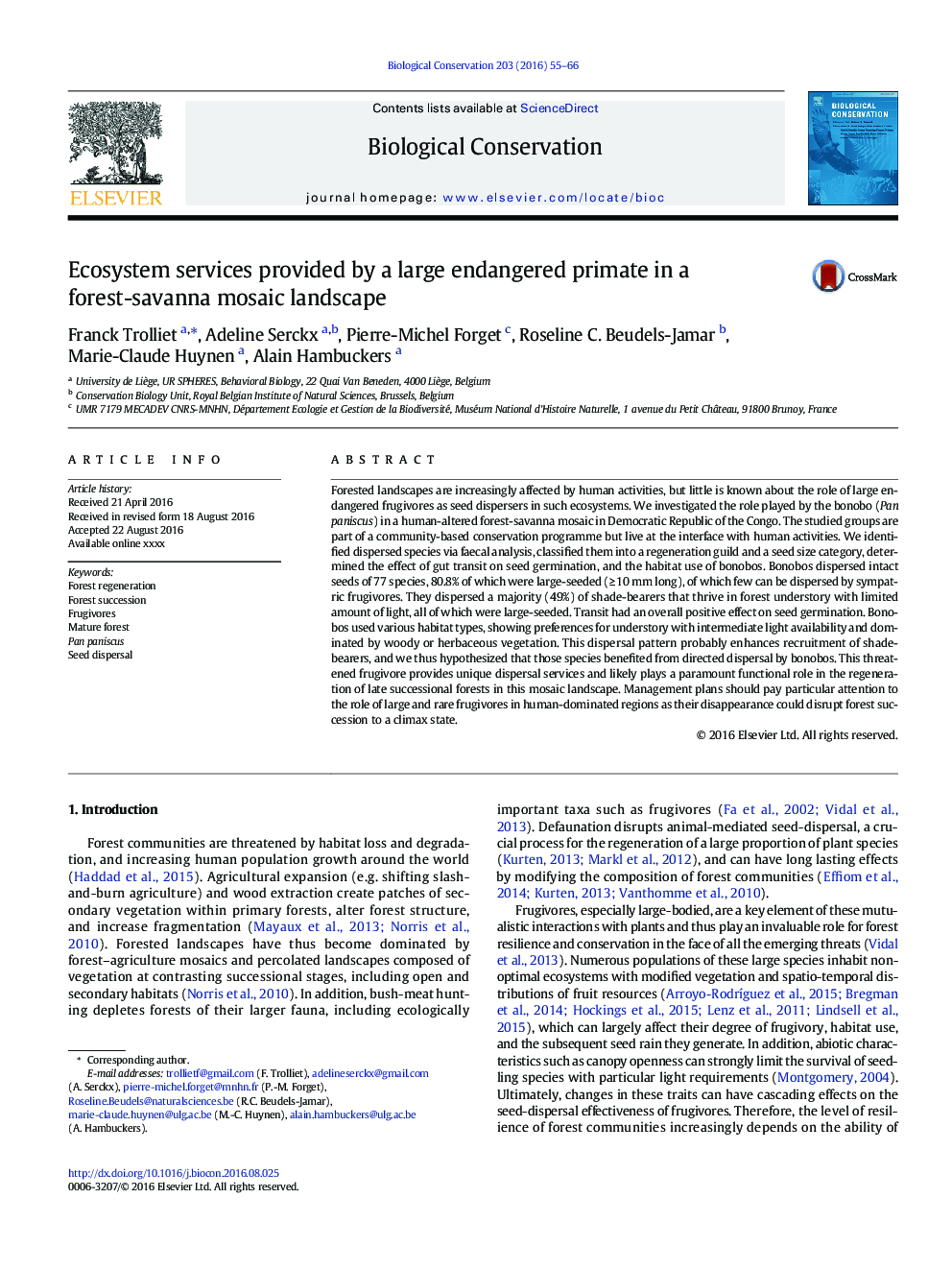| کد مقاله | کد نشریه | سال انتشار | مقاله انگلیسی | نسخه تمام متن |
|---|---|---|---|---|
| 6298056 | 1617898 | 2016 | 12 صفحه PDF | دانلود رایگان |
عنوان انگلیسی مقاله ISI
Ecosystem services provided by a large endangered primate in a forest-savanna mosaic landscape
ترجمه فارسی عنوان
خدمات اکوسیستم ارائه شده توسط یک پرتقال در معرض خطر در یک چشم انداز موزاییک جنگل و ساوانا
دانلود مقاله + سفارش ترجمه
دانلود مقاله ISI انگلیسی
رایگان برای ایرانیان
کلمات کلیدی
موضوعات مرتبط
علوم زیستی و بیوفناوری
علوم کشاورزی و بیولوژیک
بوم شناسی، تکامل، رفتار و سامانه شناسی
چکیده انگلیسی
Forested landscapes are increasingly affected by human activities, but little is known about the role of large endangered frugivores as seed dispersers in such ecosystems. We investigated the role played by the bonobo (Pan paniscus) in a human-altered forest-savanna mosaic in Democratic Republic of the Congo. The studied groups are part of a community-based conservation programme but live at the interface with human activities. We identified dispersed species via faecal analysis, classified them into a regeneration guild and a seed size category, determined the effect of gut transit on seed germination, and the habitat use of bonobos. Bonobos dispersed intact seeds of 77 species, 80.8% of which were large-seeded (â¥Â 10 mm long), of which few can be dispersed by sympatric frugivores. They dispersed a majority (49%) of shade-bearers that thrive in forest understory with limited amount of light, all of which were large-seeded. Transit had an overall positive effect on seed germination. Bonobos used various habitat types, showing preferences for understory with intermediate light availability and dominated by woody or herbaceous vegetation. This dispersal pattern probably enhances recruitment of shade-bearers, and we thus hypothesized that those species benefited from directed dispersal by bonobos. This threatened frugivore provides unique dispersal services and likely plays a paramount functional role in the regeneration of late successional forests in this mosaic landscape. Management plans should pay particular attention to the role of large and rare frugivores in human-dominated regions as their disappearance could disrupt forest succession to a climax state.
ناشر
Database: Elsevier - ScienceDirect (ساینس دایرکت)
Journal: Biological Conservation - Volume 203, November 2016, Pages 55-66
Journal: Biological Conservation - Volume 203, November 2016, Pages 55-66
نویسندگان
Franck Trolliet, Adeline Serckx, Pierre-Michel Forget, Roseline C. Beudels-Jamar, Marie-Claude Huynen, Alain Hambuckers,
